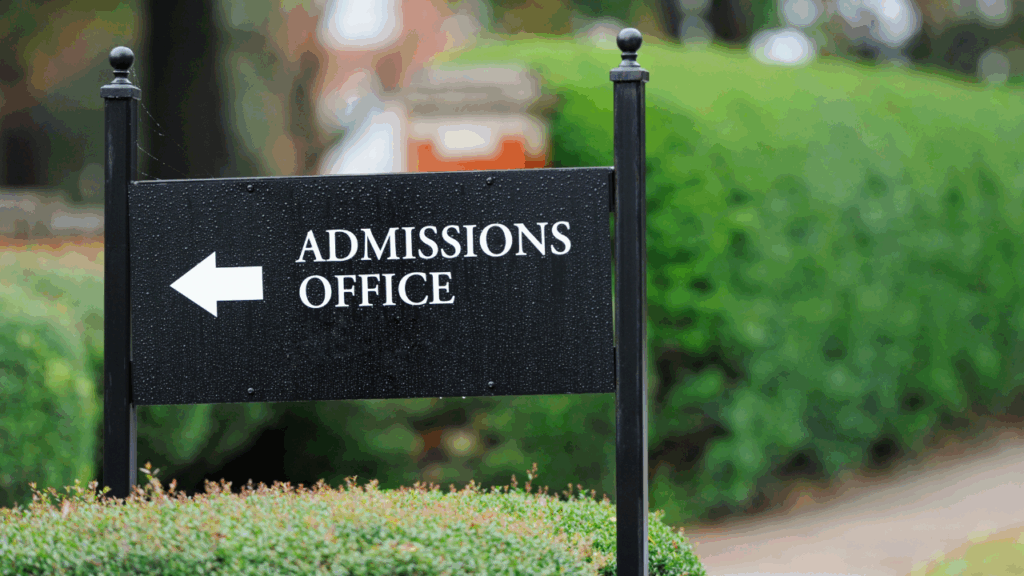TL;DR For the Class of 2028, reported acceptance rates were ultra-low: Harvard 3.59%, Yale 3.9%, Columbia 3.85%, Brown ~5.16%, Dartmouth ~5.4%, Penn 5.4%. Princeton and Cornell did not publish overall acceptance rates; Cornell disclosed 5,139 admits without a total applicant count and Princeton has a standing policy not to release cycle-time admit rates. Sources: Harvard Crimson and Gazette, Yale official class profile, Columbia Spectator, Brown Daily Herald, Dartmouth Admissions, Daily Pennsylvanian, Cornell News, and Princeton Admissions policy. (The Harvard Crimson)
Why 2024 matters
The Class of 2028 cycle (results released March–June 2024) was the first full year after the Supreme Court’s ruling restricting race-conscious admissions and came amid shifting application behavior. Several Ivies saw record or near-record pools, while others, notably Harvard and Brown, reported declines. Outcomes varied by campus, but the headline remained the same: acceptance rates were painfully low across the board. (Ivy Coach)
Ivy League acceptance rates at a glance (Class of 2028)
| University | Reported acceptance rate | Applicants | Admits | Notes |
| Harvard | 3.59% | 54,008 | 1,937 | Highest Harvard admit rate in four years, still sub-4%. (The Harvard Crimson) |
| Yale | 3.9% | 57,517 | 2,227 | Official class profile shows 3.9% (news coverage initially quoted 3.7%). (Yale College Undergraduate Admissions) |
| Columbia | 3.85% | 60,248 | 2,319 | Slight drop from prior year. (Columbia Daily Spectator) |
| Brown | ~5.16% | 48,898 | 2,521 | Third-lowest in school history. (The Brown Daily Herald) |
| Dartmouth | ~5.4% | 31,656 | 1,710 | Record selectivity and record pool. (Dartmouth Admissions) |
| Penn | 5.4% | 65,235 | 3,508 | Lowest ever for Penn. (thedp.com) |
| Princeton | Not released | Not released | Not released | University does not publish cycle-time admit rates by policy (since 2021). (Princeton University Admission) |
| Cornell | Not released | Not released | 5,139 | Cornell disclosed admits only, no rate. (Cornell Chronicle) |
A note on data quality: Princeton and Cornell explicitly do not release full acceptance-rate figures at decision time. Where official year-end class profiles exist, we cite those. Where only student or university newsrooms reported numbers, we cite those outlets and flag any later updates directly from the university.
What changed in 2024 and why it matters
1) Application volume: up, down, sideways
- Up: Dartmouth, Penn, Yale, Columbia reported increases. Dartmouth set a record at 31,656 apps, Columbia crossed 60k again, Penn topped 65k. (Dartmouth)
- Down: Harvard and Brown saw declines, although both remained extremely selective. (Ivy Coach)
2) Post-SCOTUS dynamics
The first full cycle after the Supreme Court decision limiting race-conscious admissions coincided with subtle shifts in class composition at some campuses and renewed emphasis on race-neutral pathways to diversity. Schools highlighted socio-economic diversity, first-gen representation, and geographic breadth in class profiles. (Harvard College)
3) Yield, class-shaping, and institutional priorities
Several Ivies emphasized yield strategy and financial aid to sustain diversity and meet enrollment targets. Brown, for example, reported a yield uptick for the Class of 2028. Dartmouth highlighted expanded aid and continued socio-economic diversity alongside record selectivity. (The Brown Daily Herald)
School-by-school analysis
Harvard University
Harvard admitted 1,937 students from 54,008 applicants, an acceptance rate of 3.59%. Despite the drop in applicants, the admit rate ticked up slightly relative to the previous year. Harvard’s official profile later confirmed applicant and admit counts. (The Harvard Crimson) Takeaway: Even a modest swing in applications at the very top can move the rate by tenths of a percent, but sub-4% selectivity means marginal gains from strategy matter a lot.
Yale University
Initial Yale coverage pegged the rate at 3.7% on Ivy Day, but Yale’s official Class of 2028 profile reports 3.9%, with 57,517 applicants and 2,227 admits. Always defer to the university’s official PDF for final figures. (Yale Daily News) Go deeper with this video: Applying to YALE: How to Stand Out on the Common App and Coalition App Takeaway: Yale remains among the toughest admits nationally. The difference between 3.7% and 3.9% reflects final reconciliation, likely including limited waitlist movement.
Columbia University
Columbia admitted 2,319 of 60,248 applicants, 3.85% overall. This continues Columbia’s sub-4% era and reflects sustained demand following several years of process and reporting scrutiny. (Columbia Daily Spectator) Takeaway: In extremely low-rate environments, Early Decision positioning and proof of institutional fit carry outsized weight.
Brown University
Brown’s overall rate came in at ~5.16% with 2,521 admits from 48,898 applications. It was the third-lowest admit rate in Brown’s history. (Brown Daily Herald Projects) Takeaway: Brown’s multi-round evaluation rewards well-developed academic narratives and authentic intellectual exploration. Precision on supplements is critical.
Dartmouth College
Dartmouth set a record application pool and posted a ~5.3–5.4% admit rate, depending on whether you reference the March announcement or the later class profile page. The admissions office stressed expanded aid and the most socio-economically diverse class to date. (Dartmouth) Takeaway: Record demand plus financial-aid messaging continues to pull strong national interest. Strategy and timing matter, but so do pragmatic, values-aligned stories.
University of Pennsylvania
Penn announced its lowest ever overall rate: 5.4%, with 3,508 admits out of 65,235 applicants. The university shared this at a June Board of Trustees meeting. (thedp.com) Go deeper with this video: How to Write the UPenn Supplements 2025 (Thank-You Note + Community Essay Guide) Takeaway: Penn’s holistic lens strongly tests coherence of spike, impact, and school fit. Early Decision remains a decisive lever for true “Penn-fit” candidates.
Princeton University
Princeton did not release cycle-time acceptance rate or application volume, consistent with its 2021 policy change designed, per the university, to reduce applicant anxiety. Class profile data appears later each year without headline admit rates. (Princeton University Admission) Takeaway: Strategy relies less on public admit rate benchmarks and more on understanding Princeton’s academic depth, service ethos, and research-mentored learning.
Cornell University
Cornell announced 5,139 admits on Ivy Day but did not publish total applicants or an overall acceptance rate. Cornell stopped releasing full cycle statistics several years ago. Beware of third-party estimates presented as fact. (Cornell Chronicle) Takeaway: Anchor on Cornell’s program-by-college dynamics, ED vs RD patterns historically, and demonstrated alignment to a specific college’s curriculum.
Trendlines that applicants and families should watch
1. The floor is the floor
Sub-4% rates at Harvard, Yale, and Columbia are not an anomaly. They are the operating range. Strategy cannot guarantee outcomes, but it can materially improve probabilities at the margin. (The Harvard Crimson)
2. ED/EA strategy is more consequential
Where binding Early Decision exists, admit rates tend to be higher than RD. Official round-by-round disclosures vary, but multi-year patterns remain. Families should assess ED tradeoffs honestly.
3. Post-SCOTUS emphasis on race-neutral diversity
Class profiles stress first-gen status, Pell eligibility, geography, and school context. The narrative matters. So does evidence of impact, leadership, and resilience across settings. (Dartmouth) More on this topic here: What Admissions Officers Look For After the SCOTUS Ruling
4. Yield management shapes class building
Colleges communicate price and value through aid and experience signals. Expect more nuance around need-based aid and recruitment in under-resourced geographies. (The Brown Daily Herald)
How to read a sub-5% admit rate without losing your mind
- Build a balanced list with true safeties and targets you would be happy to attend.
- Specialize your spike: develop a coherent academic and extracurricular through-line that connects to faculty, labs, centers, or programs at target schools.
- Leverage the right round: ED or Restrictive EA is a strategic tool. Do not use it for a lukewarm fit.
- Contextual excellence beats generic prestige: frame achievements relative to your school and community context.
- Use essays to show thinking, not résumé lines: clarity, intellectual curiosity, and impact beat humble-brags every time.
Frequently asked questions about Ivy acceptance rates
Are Ivy League acceptance rates lower in Early Decision or Regular Decision?
Public, apples-to-apples comparisons are tricky because several Ivies do not publish round-level data. Historically, where ED is offered, the ED admit rate is higher than RD. That does not automatically mean it is “easier” to get in. The ED pool is self-selecting, often with stronger alignment. (Ivy Coach)
Why did Princeton and Cornell not publish acceptance rates?
Princeton announced in 2021 that it would stop releasing admit rates during the cycle to reduce anxiety and gaming of statistics. Cornell also withholds full cycle stats and has for years. Both release limited class information later. (Princeton University Admission)
Which Ivy had the lowest acceptance rate in 2024?
Among schools that published rates, Harvard was lowest at 3.59%, followed closely by Columbia 3.85% and Yale 3.9%. (The Harvard Crimson)
Did the Supreme Court decision change acceptance rates?
Not directly in a uniform way. Some schools saw application increases, others declines. Several emphasized continued commitments to diversity through race-neutral means. Outcomes depend on each school’s strategy, volume, and yield goals. (Ivy Coach)
Is a 5% acceptance rate meaningfully different from 4%?
At the individual level, both are long odds. Strategy, school fit, and round choice matter more than the single-digit difference.
What this means for families planning 2025 and 2026 applications
- Start earlier: Competitive spikes take time. Identify research, competitions, service ventures, or original projects that compound.
- Target faculty and programs: Show program-level alignment in supplements. “Why us” is not a vibes survey.
- Invest in context: Recommendations and school profile details help readers calibrate the scale of your impact.
- Use data, but avoid data traps: Treat any third-party “Cornell acceptance rate” figures for 2024 as estimates, not official fact. Anchor on what the university actually releases. (Cornell Chronicle)
Sources and notes
- Harvard: Harvard Crimson Ivy Day report and Harvard Gazette counts, plus Harvard’s class profile. (The Harvard Crimson)
- Yale: Official Yale Class of 2028 profile PDF and Yale Daily News Ivy Day coverage. (Yale College Undergraduate Admissions)
- Columbia: Columbia Spectator acceptance-rate report, plus Columbia’s Class of 2028 profile PDF for context. (Columbia Daily Spectator)
- Brown: Brown Daily Herald story and its data site. (The Brown Daily Herald)
- Dartmouth: Dartmouth press release and official class profile showing 5.4%. (Dartmouth)
- Penn: Daily Pennsylvanian report from June 2024. (thedp.com)
- Princeton: Admission policy statement and coverage from The Daily Princetonian. (Princeton University Admission)
- Cornell: Cornell Chronicle note on admits and Ivy Coach summary on Cornell’s non-reporting. (Cornell Chronicle)








